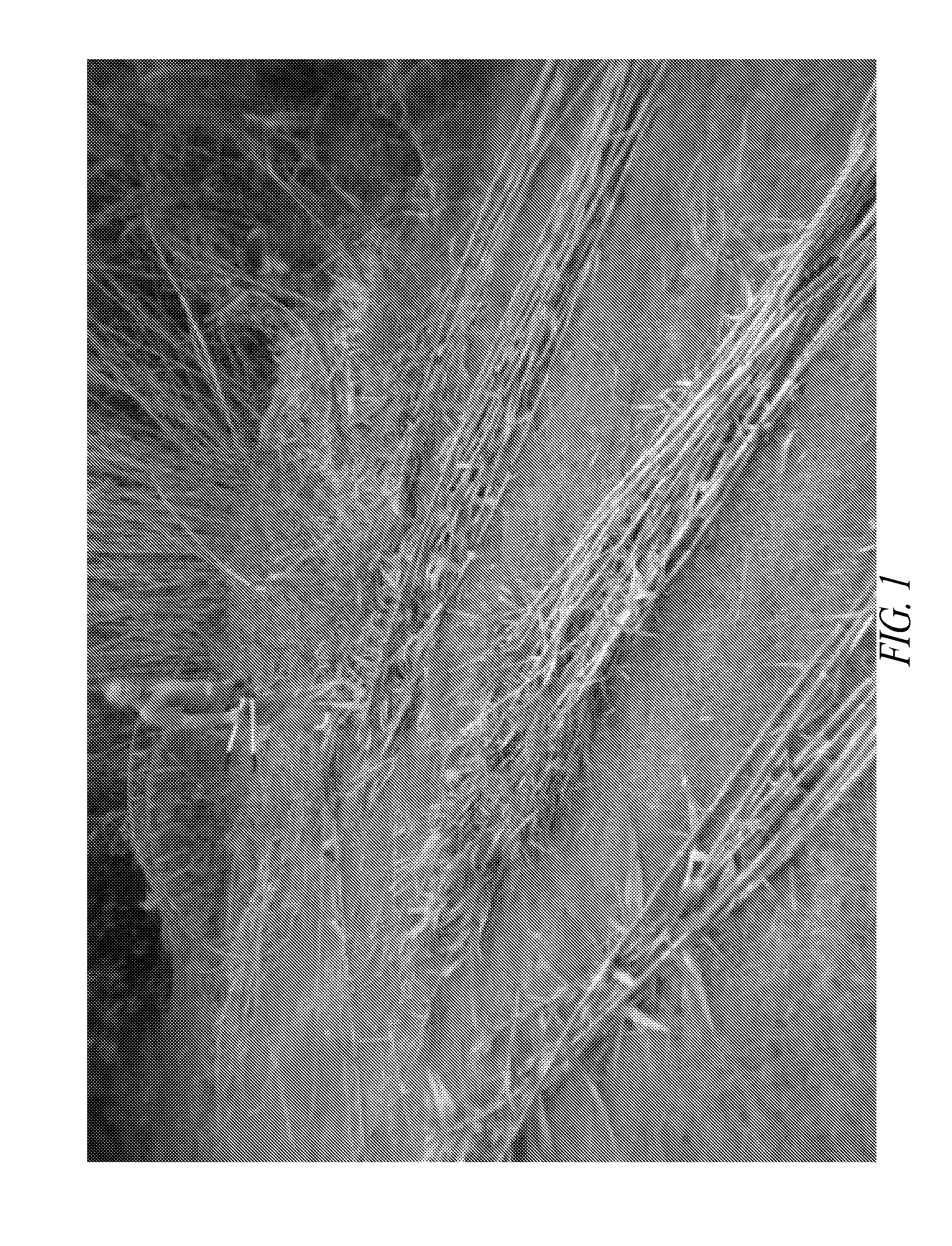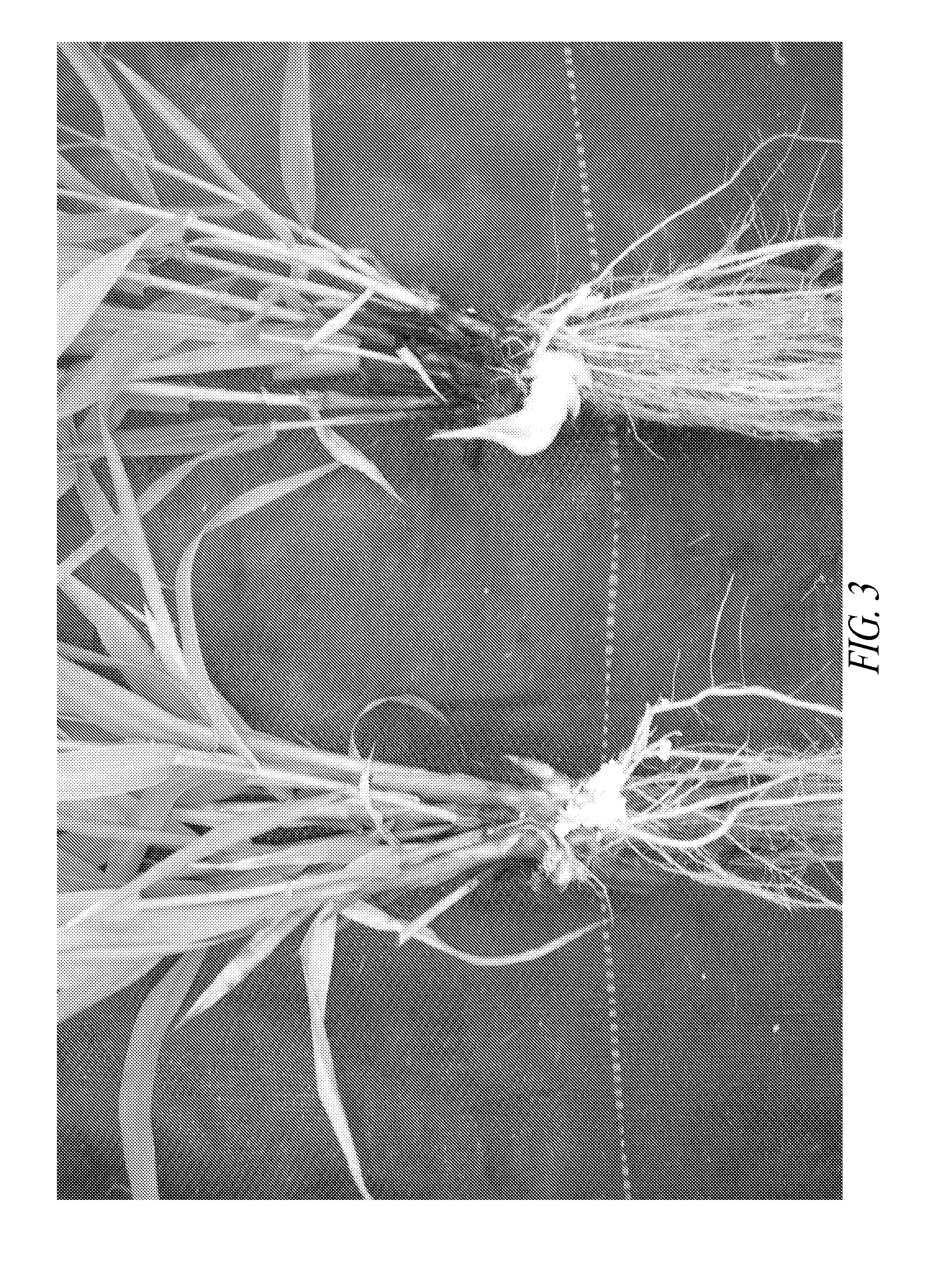Methods for vegetative propagation of grass plants
a technology of vegetative propagation and grass plants, applied in the direction of plant cultivation, biocide, turf growing, etc., can solve the problems of sterile plants, large time and effort required for traditional seed culture, and the propagation of giant reed by rhizome division or traditional seed culture, etc., to achieve the effect of improving the composition of growth
- Summary
- Abstract
- Description
- Claims
- Application Information
AI Technical Summary
Benefits of technology
Problems solved by technology
Method used
Image
Examples
Embodiment Construction
[0057]Embodiments of the present invention relate generally to improved growth-enhancing compositions and methods of use thereof for propagating grass plants of the Class Monocotyledonae, including those of the family Poaceae. Particular embodiments relate to compositions and methods for propagating sterile grass plants, such as Arundo donax or its cultivars. As detailed herein, these embodiments are based in part on the discovery that the timely in situ application of growth-enhancing compositions to meristematic tissues of grass plants greatly accelerates the propagation cycle of these plants. Mainly, the improved methods of propagation provided herein include the in situ treatment of immature stems of grass plants with growth-enhancing compositions that comprise a mixture of at least one auxin, at least one cytokinin, and at least one polyaspartic acid. In certain embodiments, these compositions may further comprise at least one seaweed extract, at least one surfactant, or both.
[...
PUM
| Property | Measurement | Unit |
|---|---|---|
| height | aaaaa | aaaaa |
| height | aaaaa | aaaaa |
| thick | aaaaa | aaaaa |
Abstract
Description
Claims
Application Information
 Login to View More
Login to View More - R&D
- Intellectual Property
- Life Sciences
- Materials
- Tech Scout
- Unparalleled Data Quality
- Higher Quality Content
- 60% Fewer Hallucinations
Browse by: Latest US Patents, China's latest patents, Technical Efficacy Thesaurus, Application Domain, Technology Topic, Popular Technical Reports.
© 2025 PatSnap. All rights reserved.Legal|Privacy policy|Modern Slavery Act Transparency Statement|Sitemap|About US| Contact US: help@patsnap.com



